America’s Favorite Retired College Horticulture Professor, Debbie Flower, discusses garden chemical safety, including: when organic controls can be hazardous; the dangers of homemade pesticides; how to check for organic ingredients in a pesticide product; and, ways to determine if your organic garden “inputs” (water, mulches, manures) are safe to use.

Despite your best organic efforts, this CDC study says there’s a high chance that glyphosate is probably in your urine:
Here’s the background on one statement in that podcast: that there might be glyphosate in your urine:
“…more than 80 percent of urine samples drawn from children and adults participating in a US health study contained a weedkilling chemical linked to cancer and other health problems. The June 30 report by a unit of the Centers for Disease Control and Prevention (CDC) found that out of 2,310 urine samples collected, 1,885 were laced with detectable traces of glyphosate, the active ingredient in herbicides sold around the world, including the widely used Roundup brand.”
Sources For Water Testing:
National Testing Laboratories: https://watercheck.com
Water Testing Accredited Laboratories in California: https://www.calwater.com/waterquality/water-quality-testing-labs/
Source for Organic rice straw: Brokenbox Ranch, Williams, CA
From Clemson University: “Less Toxic Insecticides”:
Factsheet | HGIC 2770 | Updated: Aug 27, 2021 |
While a good pest management plan will start with preventative, cultural, and other non-chemical methods, these are sometimes not completely effective on their own. In this case, a pesticide may be considered. If pesticide use is deemed necessary for control of the pest problem, it is good practice to use the least toxic pesticide that will do the job effectively. Although all pesticides are by their nature toxic in some way to some organisms, there are now a number of “less toxic” pesticide options.
Insecticides may be considered less toxic for several reasons. Generally, they should pose less risk to human and environmental health than conventional insecticides. Many break down rapidly and do not accumulate in the body or environment. Some are very pest specific and do little or no damage to other organisms. Still, others, such as bait stations, minimize human exposure to the pesticide.
While “organic” insecticides are often less damaging to the environment than conventional insecticides, they are still pesticides. All pesticides should be evaluated before selection for level of toxicity, effectiveness, environmental impacts, and costs. Some “organic” or natural pesticides are as toxic, or even more toxic, than some synthetic pesticides. All pesticide products have a toxicity signal word on the label, which will be “caution”, “warning”, or “danger”. Choose the products with “caution” on the label, as they are least apt to harm the user and the environment.
Soaps & Oils
Insecticidal soaps and oils have a number of advantages for controlling insects. They are virtually non-toxic to humans and other mammals and are relatively safe to beneficial insects in the landscape. They control a wide range of common soft-bodied pests, including aphids, mealybugs, thrips, whiteflies, mites, and scales. It is difficult for pests to develop resistance to oils and soaps. Soaps and oils are now readily available and relatively inexpensive.
Both soaps and oils can cause damage to plants if applied when plants are water-stressed, temperatures are above 90 °F, sprayed in direct sunlight, or when high humidity prevents rapid drying. Some plants are sensitive to oil or insecticidal soap sprays. See sensitive plant lists in HGIC 2771, Insecticidal Soaps for Garden Pest Control. Read and follow the label.
Since soaps and oils work on contact, an effective application must coat both the upper and lower leaf surfaces as well as stems for best results. Repeated applications may be necessary. Apply soap or oil sprays in the early morning or late evening to reduce drying times for more effective insect pest control.
Insecticidal Soaps: Insecticidal soaps kill by suffocation; additionally, they damage the protective coat of soft-bodied insects, causing them to dehydrate.
Homemade soap recipes are not recommended because they may be more likely to cause foliage burn. Commercial insecticidal soaps are tested on plants and are less likely to cause damage. Some are available as concentrates to dilute before spraying, and some are available as pre-mixed Ready to Use (RTU) bottles. Examples of insecticidal soap products are:
Bonide Insecticidal Soap RTU
Espoma Organic Insect Soap RTU
Garden Safe Insecticidal Soap Insect Killer RTU
Miracle-Gro Natures’s Care Insecticidal Soap RTU
Natria Insecticidal Soap RTU
Natural Guard Insecticidal Soap Concentrate
Safer Brand Insect Killing Soap Concentrate
Whitney Farms Insecticidal Soap RTU
Horticultural Oils: Oil products smother soft-bodied insects on contact. Oils are formulated as either horticultural or dormant oils. Dormant oils are heavier, less refined oils used on dormant, leafless plants to control overwintering insects (e.g., aphids, spider mites, and scales). Dormant oils will damage plant foliage if used during the growing season. Horticultural oils are also called summer or superior oils, and these are lighter and more refined. They can be applied to both actively growing plants as well as dormant plants for insect pest control. Do not apply horticultural oil sprays when the temperature is above 90 °F, below 45 °F, or if rain is in the forecast within 24 hours.
Most horticultural oils are applied at a 1 to 2% mix with water to spray actively growing plants (this would be 2½ to 5 tablespoons of oil with a gallon of water). To use horticultural oil as a “dormant oil” spray to control pests on woody plant bark, they are mixed at 4% with water (this would be 10 tablespoons of oil per gallon of water). Always spray very late in the day to slow drying time and to get better insect control. Most are available as concentrates made to dilute with water in a sprayer, although some are available as either a Ready to Spray (RTS), which is a bottle to attach to a garden hose for spraying, or as a Ready to Use (RTU), which is a pre-mixed spray bottle. Examples of horticultural oils are:
Bonide All Seasons Spray Oil Concentrate; & RTS; & RTU
Ferti-lome Horticultural Oil Spray Concentrate; & RTS
Monterey Horticultural Oil Concentrate; & RTS; & RTU
Safer Brand Horticultural & Dormant Spray Oil Concentrate
Southern Ag Parafine Horticultural Oil (concentrate)
Summit Year Round Spray Oil Concentrate
Sesame Oil: Sesame oil sprays work in the same manner as horticultural oils. Follow label directions for mixing and use.
Organocide Bee Safe 3-in-1 Garden Spray Concentrate; RTS; & RTU
Botanical Insecticides
Botanical insecticides are naturally occurring toxins extracted from plants. There are several advantages to using botanical rather than synthetic insecticides. Plant derived insecticides break down quickly in the environment, resulting in little risk of residues on food crops and less risk to beneficial insects. Some materials can be used shortly before harvest. Most botanicals are rapid acting, and most, but not all botanicals are of low to moderate toxicity to mammals. Most botanical insecticides must be eaten by the insect pest. Therefore, they are primarily harmful to these pests and do little harm to beneficial insects.
There can also be disadvantages to using these products. Rapid breakdown, while less risky to health and environment, often creates a need for precise timing or more frequent applications. Several botanical insecticides are quite toxic and should be handled accordingly. Some botanical insecticides can be difficult to find in local stores.
Neem products: Neem oil is a botanical insecticide made from extracts of Neem tree seeds. The active ingredient is listed on product labels as clarified, hydrophobic extracts of neem oil. It is used to control a wide variety of insects, including leafminers, whiteflies, thrips, caterpillars, aphids, mealybugs, spider mites, scale crawlers, and beetles. Neem oil is most effective against actively growing immature insects. Neem oil sprays kill small insect pests and mites by suffocation, as do horticultural oil sprays, but also have some insecticidal properties. Neem oil sprays have some fungicidal activity, but it is typically limited to powdery mildew control. This control is primarily because it is an oil. However, a horticultural oil spray generally works better for powdery mildew control.
Azadirachtin, the active ingredient in neem extracts, has a very low mammalian toxicity. It has been separated from the neem oil. It is a somewhat effective insect feeding deterrent and growth regulator. Azadiractin does not produce a quick knockdown and kill but stops insect feeding. The treated insect usually cannot molt into its next life stage and dies without reproducing. It also is an egg-laying deterrent.
Many commercial neem products exist, and these products are labeled for use on ornamentals, foliage plants, trees, shrubs, and food crops. Most neem oil products are available as concentrates made to dilute with water in a sprayer, but some are available as either Ready to Spray (RTS), which is a bottle to attach to a garden hose for spraying, or as Ready to Use (RTU), which is a pre-mixed spray bottle. Examples of neem products for landscape and garden use include:
Neem Oil:
Bonide Rose Rx 3-in-1 Concentrate; & RTU
Bonide Neem Oil Concentrate; & RTU
Concern Garden Defense Multi-Purpose Spray Concentrate
Espoma Organic Neem Oil 3-in-1 RTU
Ferti-lome Rose, Flower & Vegetable Spray Concentrate
Garden Safe Fungicide 3 Concentrate; & RTU; & RTS
Garden Safe Neem Oil Extract Concentrate
Monterey 70% Neem Oil Fungicide/Insecticide/Miticide Concentrate; & RTS
Natria Neem Oil Concentrate; & RTU
Natural Guard Neem Concentrate
Safer Brand Neem Oil Concentrate; & RTU
Southern Ag Triple Action Neem Oil Concentrate
Some neem oil products also contain the botanical insecticide pyrethrin. Examples are:
Bonide Bon-Neem II Concentrate
Ferti-lome Triple Action Plus II with Neem Oil
Ferti-lome Fruit Tree Spray Concentrate
Monterey Fruit Tree Spray Plus RTS
Monterey Rose & Flower Spray Plus RTS
Ortho Tree & Shrub Fruit Tree Spray Concentrate
Azadiractin:
Amazin 1.2% Plus
Aza-Direct Botanical Insecticide
AzaGuard Botanical Based Insecticide/Nematicide
AzaMax Botanical Insecticide
AzaPro
AzaSol Non-oil Based, Water Soluble Powder
Azatin O Biological Insecticide
Azera Gardening (with Pyrethrins)
Biosafe Insect Control
Limonene (also known as d-Limonene) is produced from citrus oils extracted from oranges and other citrus fruit peels. It is used as a contact insecticide against ants, roaches, palmetto bugs, fleas, silverfish, and many other insects. Limonene has low oral and dermal toxicity to mammals, birds, and fish, although it can cause skin irritation or sensitization in some people. Limonene is not used for insect pest control on plants, as this active ingredient may cause significant plant injury. Several natural herbicide products contain d-limonone for weed control.
Pesticide products containing d-limonene are available for indoor insect control, such as in Orange Guard Home Pest Control Insect Killer Concentrate & RTU.
Capsaicin is the material that makes chili peppers hot. It can be used on ornamentals outdoors and indoors for control of aphids, spider mites, thrips, whitefly, lace bugs, leafhoppers, and other pests. It is important to note that capsaicin-containing products are primarily used to repel insects rather than to kill existing infestations, and they also appear to be effective at repelling certain animal pests, such as rabbits, deer, and squirrels. Homemade hot pepper sprays can be made for insect pest control on plants. Products containing capsaicin as an animal repellent include:
Bonide Hot Pepper Wax Animal Repellent RTU,
Pyrethrin: Pyrethrum is made from the finely powdered flowers of a species of daisy. The word pyrethrum is the name for the crude flower dust itself, and the term pyrethrin refers to the insecticidal compounds that are extracted from pyrethrum. Pyrethroids are not botanical insecticides but synthetically produced pesticides that are very similar in structure to pyrethrins. They are stronger and last longer on plants for pest control.
Pyrethrin is a contact insecticide and must be applied directly to the insect to be effective. Pyrethrin rapidly paralyzes pests but may not kill them. However, pyrethrins are often formulated with another insecticide to ensure that paralyzed insects do not recover and once again become pests.
Because the pyrethrin mammalian toxicity is very low, it can be applied to food crops close to harvest. Pyrethrin has high contact toxicity for common beneficial insects., but its insecticidal activity only lasts a few hours. There are many products with pyrethrin available; some products contain pyrethrin alone, and other products are combined with another insecticide, such as in the lists below.
Pyrethrins:
PyGanic Crop Protection EC 1.4 (1.4% a.i.) OMRI,
PyGanic Crop Protection EC 5.0 (5.9% a.i.) OMRI.
Monterey Bug Buster – O (1.4% a.i.) OMRI
Pyrethrins & Neem Oil:
Ferti-lome Triple Action Plus II with Neem Oil Conc.; & RTU
Ferti-lome Fruit Tree Spray Concentrate (with pipernyl butoxide),
Bonide Bon-Neem II Concentrate (with pipernyl butoxide),
Ortho Tree & Shrub Fruit Tree Spray Concentrate.
Pyrethrins & Pipernyl Butoxide:
Southern Ag Natural Pyrethrin Concentrate,
Garden Safe Rose & Flower Insect Killer RTU,
Garden Safe Multi-purpose Garden Insect Killer RTU
Pyrethrins & Sulfur:
Bonide Captain Jack’s Orchard Spray Concentrate; & RTS,
Bonide Tomato & Vegetable 3 in 1 & RTU
Ortho Insect, Mite & Disease 3-in-1 RTU
Natria Rose & Flower Insect, Disease & Mite Control RTU
Natria Insect, Disease & Mite Control RTS; & RTU
Pyrethrins & Canola Oil:
Monterey Take Down Garden Spray Concentrate; & RTU
Whitney Farms Outdoor Insect Killer RTU,
Espoma Organic Insect Control RTU
Garlic is marketed in several products intended to repel insects, much as capsaicin does. Products are labeled to repel a wide variety of pests on ornamental plants, but garlic may also repel nuisance animals. To date, there is limited research showing the effectiveness of garlic insecticides. Products containing garlic or garlic oil include:
Havahart Critter Ridder Deer, Rabbit & Squirrel Repellent Concentrate
Captiva Insect Repellent/ Insecticide (with capsicum & soybean oil)
Rotenone, Sabadilla, Ryania, and Nicotine are older botanical insecticides that are no longer available due to toxicity to people and/or the environment. Although these insecticides were naturally derived, they are more toxic or harmful than many commercially produced insecticides.
Essential Oils
A variety of pesticides based on essential oils or components of essential oils have come on the market in the last few years. Essential oils are volatile, highly concentrated substances extracted from plant parts. In 1996 the EPA established that certain ingredients that pose minimum risk to users no longer require EPA approval to be marketed as insecticides. A number of these ingredients are essential oils, including the oils of geranium, cedar, cinnamon, citronella, citrus, clove, eugenol (a component of clove oil), garlic, mints, rosemary, thyme, and several others. As insecticides, these work most commonly as contact-killing agents only, so re-treatment may be needed. Most essential oils used as pesticides work by disrupting an insect neurotransmitter that is not present in people, pets, or other vertebrates.
Examples of brands that make essential oil insecticides for insect pest control within homes are included below, but check the label for ingredients first.
Wondercide
Dr. Earth
Cedarcide
Essentia
Maggie’s Farm
Aunt Fannie’s
Monterey
Some Ortho Home Defense products
Microbial Insecticides
Microbial insecticides contain microorganisms (viruses, bacteria, fungi, protozoa, or nematodes) or their by-products. Microbial insecticides are especially valuable because their toxicity to animals and humans is extremely low.
Insecticidal products comprised of a single species of microorganism may be active against a wide variety of insects or group of related insects (such as caterpillars), or they may be effective against only one or a few species. Most are very specific. Since there is such a narrow range of insects killed, they spare the beneficial insects almost entirely.
Bacillus thuringiensis products are the most widely used microbial insecticides in the United States. They are commonly known as Bt. Different subspecies of Bt are effective against different groups of insects or their larvae.
The best results will be achieved using Bt products by following a few guidelines.
Make sure the Bt product you have chosen lists the specific insect you want to control.
Make sure the insect is at a stage where it is susceptible to control by Bt. In general, Bt products are effective against young larval stages but will not kill adults.
Spray the parts of the plant on which insects are feeding thoroughly, including the underside of leaves. Bt products must be eaten in order to be effective. Liquid formulations are more effective and stay on plants better than dust formulations.
Treat with Bt in the late afternoon or evening or on a cloudy day as Bt breaks down in sunlight.
Be aware that Bt does not kill immediately, but the poisoned insects will stop feeding almost immediately.
Bacillus thuringiensis var. kurstaki (Btk) products are toxic only to larvae of butterflies and moths. They are used to safely control many common leaf-feeding caterpillars, including caterpillar pests on vegetables, bagworms and tent caterpillars on trees and shrubs, and European corn borer larvae. Some caterpillars are not effectively controlled by Bt, especially those that live in the soil or bore into plant tissues without consuming a significant amount of the Bt applied to plant surfaces. Liquid Bt products are frequently referred to as Thuricide, and Bt dust products are often referred to as Dipel.
Bacillus thuringiensis var. kurstaki products include:
Bonide Thuricide Bt Concentrate
Garden Safe Bt Worm & Caterpillar Killer Concentrate
Monterey Bt Concentrate; & RTU
Natural Guard Caterpillar Killer Spray with Bt Concentrate; & RTU)
Safer Brand Caterpillar Killer Concentrate
Southern Ag Thuricide Bt Caterpillar Control Concentrate
Tiger Brand Worm Killer Concentrate
Ferti-lome Dipel Biological Insecticide Dust
Safer Brand Garden Dust with Bt
Southern Ag Dipel Dust
Bacillus thuringiensis var. israelensis (Bti) formulations kill mosquito, black fly, and fungus gnat larvae. Bti is most effective for mosquito or black fly control when it is used on a community-wide basis. For most homeowners, eliminating standing water sources is more effective than applying Bti or other insecticides. Floating products sold as dunks or pellets can eliminate mosquito larvae in ornamental ponds and other areas that cannot be drained. Bti products that are available commercially include:
Summit Mosquito Dunks,
Summit Mosquito Bits,
Microbe-Lift Biological Mosquito Control (granules & liquid)
Milky Spore products contain the naturally occurring bacterium Paenibacillus popillae. These products are applied to turf and watered into the soil below to control the larval (grub) stage of the Japanese beetle, and less effectively, some other beetle grubs. If a substantial grub population is present at the time of application, milky spore can survive beneath undisturbed sod for a period of 15 to 20 years. Consequently, lawn applications of milky spore bacteria might not have to be repeated each year.
Examples of products are:
St Gabriel Organics Milky Spore Powder Japanese Beetle Control
St Gabriel Organics Milky Spore Granular Grub Control
Spinosad is an insect toxin derived from a soil-dwelling bacterium. It kills primarily by ingestion and is used against fire ants, caterpillars, thrips, leaf miners, and some beetles. It is also used against caterpillar borers of fruit trees. When applied at recommended rates, this product poses less risk than most insecticides to mammals, birds, fish, and beneficial insects. It is, however, toxic to bees and should not be applied to plants in flower. Affected pests stop feeding within minutes but may remain on the plant for up to two days. Always spray plants late in the day to reduce any harmful effects on pollinating insects.
Products containing spinosad are sold as concentrates to spray or as fire ant baits in granular form. The sprays are labeled for use on ornamentals, lawns, and vegetables; the baits can be used in landscapes and within vegetable gardens. Examples of concentrates and baits are:
Spinosad Concentrates:
Bonide Colorado Potato Beetle Beater Concentrate,
Bonide Captain Jack’s Deadbug Brew Concentrate; & RTU,
Ferti-lome Borer, Bagworm & Leafminer Spray Concentrate,
Monterey Garden Insect Spray Concentrate,
Natural Guard Spinosad Landscape & Garden Insecticide RTS,
Southern Ag Conserve Naturalyte Insect Control Concentrate.
Spinosad Fire Ant Baits:
Conserve Fire Ant Bait,
Ferti-lome Come and Get It! Fire Ant Bait,
Southern Ag Payback Fire Ant Bait,
Terro Fire Ant Bait Mound or Broadcast Treatment.
Beauveria bassiana is a naturally occurring fungus that attacks and kills a variety of immature and adult insects. Insects effected by various formulations include whiteflies, aphids, mites, caterpillars, leaf hoppers, grasshoppers, Colorado potato beetles, Mexican bean beetles, Japanese beetles, boll weevils, cutworms, sod webworms, bark beetles, chinch bugs, fire ants, European corn borers, and codling moths. Beneficial insects, such as lady beetles, are also susceptible.
Products containing Beauveria work best when applied at the onset of an infestation. Thorough spray coverage is essential because fungal spores must contact the insect for infection to occur. Then it typically takes three to seven days after application for the spores to germinate, penetrate, and grow throughout the insect, thus killing them.
Examples of Commercial products containing Beauvaria include:
Naturalis L (liquid)
BioWorks Botanigard 22WP (wettable powder)
BioWorks Botanigard ES (liquid)
BioWorks Botanigard Maxx (with pyrethrins; liquid)
Mycotrol WPO (wettable powder)
Mycotrol ESO (liquid)
BioSolutions BB Fix (wettable powder)
Beneficial Nematodes Nematodes are microscopic, worm-like parasites. While some species of nematodes are pests of turfgrass and other plants, others are beneficial, being parasites of harmful insects. Since beneficial nematodes cannot develop in vertebrate animals, they are very safe for use in pest control.
Beneficial nematodes can be used to control a variety of plant pests, including larvae of black vine weevil, clearwing borers, cutworms, sod webworms, mole crickets, and white grubs. It is important to select the proper nematode species when trying to control a particular pest.
Nematodes can be difficult to use for most home gardeners. They must be shipped, stored, and used under specific temperature and moisture conditions and generally must be used very soon after shipping. For this reason, they are best ordered from suppliers immediately after a pest problem is observed.
A number of nematode products are available by mail order. Be sure the product you are ordering is specified for the pest you have and that you are able to provide proper environmental conditions for the nematodes. In general, nematodes require moist conditions, high humidity, and temperatures between 55 and 90 °F with little direct sunlight.
Minerals
Diatomaceous Earth is a non-toxic powder composed of fossilized, one-celled organisms called diatoms. It is used to control slugs, millipedes, sowbugs, cockroaches, ants, and soft-bodied insects like aphids. It has low mammalian toxicity. Use the “natural grade,” not the type used as a filtering agent in swimming pools.
Prolonged exposure to diatomaceous earth will irritate the lungs and other tissues of people or pets. Because it also kills honeybees, avoid applying the product to crops in flower. Diatomaceous earth products include:
Bonide Diatomaceous Earth Crawling Insect Killer,
Garden Safe Crawling Insect Killer Diatomaceous Earth,
Harris Diatomaceous Earth Crawling Insect Killer,
Natural Guard Crawling Insect Control Containing Diatomaceous Earth,
Safer Brand Ant & Crawling Insect Killer,
St Gabriel Organics Insect Dust Diatomaceous Earth.
Kaolin Clay products act as a barrier that irritates insects and disguises the host plant by coating it with a ghostly white film. Insects are apparently unable to recognize plants treated with kaolin. It is most commonly used against a wide variety of pests on apple and pear trees. In addition, kaolin can be used to control Japanese beetles, tarnished plant bugs, thrips, leafhoppers, cucumber beetles, and Colorado potato beetles on vegetable crops. Kaolin must be applied as a preventative to be effective and cannot control a pest that is already established.
Kaolin clay can be applied up to the day of harvest and is non-toxic. Kaolin is sold as Surround. Examples of products are:
Gardens Alive Surround Broad Spectrum Sun & Insect Crop Protectant
Nova Source Surround WP
Boric Acid is derived from boron, a naturally occurring mineral. It acts as a stomach poison and causes insects to die from starvation. Boric acid is available in powder, paste, aerosol, tablet, and liquid forms for use against cockroaches, ants, and other insects. It should not be applied around plants in the landscape because, although boron is a necessary plant micro-nutrient, larger than trace amounts are toxic to plants. Most boric acid products are available as ready-to-use products. Boric acid (labels may list this as orthoboric acid or sodium tetraborate) is sold under a number of brand names, and product examples include :
Avenger Boric Acid Roach Killer II (powder)
Bonide Boric Acid Roach Killer (powder)
Hot Shot Maxattrax Roach Killing Powder with Boric Acid
Terro Multi-Purpose Insect Bait
Zap-A-Roach – Roach & Ant Killing Powder
Zone Defense Kills Roaches with Boric Acid (powder)
Silica Gel is an inert, nonabrasive material that is very effective in absorbing moisture. It absorbs the waxy coating on the insect’s body and causes death by dehydration. Silica gel products are often used by professional pest control operators to control cockroaches, silverfish, and other pests. Examples are:
PT Tri-Die Aerosol,
CimeXa Insecticidal Dust, and
Bayer Drione Insecticide (dust).
These contain amorphous silica gel.
Sulfur is probably the oldest known pesticide in current use. It can be used as a dust, wettable powder, or liquid and is primarily for disease control. However, mites, psyllids, and thrips are also controlled by sulfur. Sulfur is non-toxic to mammals but may irritate skin or especially the eyes. Sulfur is also used as a fungicide to control powdery mildew, rusts, brown rot, and leaf spots on fruits, vegetables, and ornamentals.
Sulfur has the potential to damage plants in hot, dry weather. It is also incompatible with other pesticides. Do not use sulfur within 20 to 30 days of applying spray oils to plants as it reacts with the oils and is more likely to cause damage to foliage. Do not apply sulfur when temperatures are above 80 °F. Examples of products containing sulfur are:
Sulfur:
Hi-Yield Wettable Dusting Sulfur,
Safer Brand Garden Fungicide Concentrate; & RTU OMRI,
Southern Ag Wettable or Dusting Sulfur,
Bonide Sulfur Plant Fungicide (dust or spray),
Sulfur & Pyrethrins:
Bonide Captain Jack’s Orchard Spray Concentrate; & RTS,
Bonide Tomato & Vegetable 3 in 1 & RTU
Natria Rose & Flower Insect, Disease & Mite Control RTU
Natria Insect, Disease & Mite Control RTS; & RTU
Ortho Insect, Mite & Disease 3-in-1 RTU
Sulfur with Insecticidal Soap:
Safer Brand 3-in-1 Garden Spray Concentrate OMRI.
Safer Brand Rose & Flower 3-in-1 Garden Spray RTU OMRI
Safer Brand Tomato & Vegetable 3-in-1 Garden Spray RTU OMRI
Insect Growth Regulators
Insect growth regulators (IGRs) are juvenile insect hormone analogs. They interfere with egg development and molting of various insect life stages. Because of their mode of action, they are very safe for vertebrate animals. IGRs are among the safest pesticides for application in homes. They are primarily used in homes for flea control. More information is available in HGIC 2423, Flea Control.
Two commonly available IGRs are methoprene (Precor) and pyriproxyfen (Nylar). The latter is photostable, and therefore can also be used outdoors. Nylar is sold as Martin’s IG Regulator.
Safer Formulations
Bait Stations deliver an insecticide through a sealed plastic or metal chamber that insects enter. This gives bait stations the advantage of decreasing both the amount of insecticide used and the likelihood of exposure to it. Bait stations are particularly suitable for use in situations where the safety of children and pets is a concern or in areas where food is prepared or stored.
Numerous brands of bait stations are commonly available to control cockroaches and ants. Some of the more effective bait stations have fipronil as the active ingredient, but those with boric acid (it may list this as orthoboric acid or sodium tetraborate) or hydramethylnon are also available. Each company below has a variety of baits stations and gels. Examples of products are:
Terro Liquid Ant Bait,
Combat Source Kill Max Ant Bait,
Bayer Maxforce FC Ant Bait Stations,
Combat Roach Killing Bait,
Bayer Maxforce FC Magnum Roach Killer Bait Gel.
Pesticide Safety
Always read the pesticide label and follow its directions exactly. You may only use the pesticide on sites or crops listed on the label. Be sure to observe all special precautions that are listed on the label. Wear protective clothing or equipment as listed on the label when mixing or applying pesticides. Mix pesticides at the rate recommended for the target site as listed on the label. Never use more than the label says. Follow all label directions for safe pesticide storage and disposal. Always remember to read and heed the six most important words on the label: “KEEP OUT OF REACH OF CHILDREN.”
Caution: Pollinating insects, such as honey bees and bumblebees, can be adversely affected by the use of pesticides. Avoid the use of spray pesticides (both insecticides and fungicides), as well as soil-applied, systemic insecticides unless absolutely necessary. If spraying is required, always spray late in the evening to reduce the direct impact on pollinating insects. Always try less toxic alternative sprays first for the control of insect pests and diseases. For example, sprays with insecticidal soap, horticultural oil, neem oil extract, spinosad, Bacillus thuringiensis (B.t.), or botanical oils can help control many small insect pests and mites that affect garden and landscape plants. Neem oil extract or botanical oil sprays may also reduce plant damage by repelling many insect pests. Practice cultural techniques to prevent or reduce the incidence of plant diseases, including pre-plant soil improvement, proper plant spacing, crop rotation, applying mulch, applying lime and fertilizer based on soil test results, and avoiding overhead irrigation and frequent watering of established plants. Additionally, there are less toxic spray fungicides that contain sulfur or copper soap and biological control sprays for plant diseases that contain Bacillus subtilis. However, it is very important to always read and follow the label directions on each product. For more information, contact the Clemson Extension Home & Garden Information Center.
Thank you for listening to the Garden Basics with Farmer Fred podcast! It’s available wherever you get your podcasts. Please share it with your garden friends.
As an Amazon Associate, I earn from qualifying purchases from some of the underlined links in the newsletter. This is how I am trying to keep this a free newsletter. And as long as you buy whatever you want from Amazon using any of those links to get into the Amazon site, I get a few pennies. Thank you.
Thanks for Subscribing and Spreading the Word About the Beyond the Basics: The Garden Basics with Farmer Fred newsletter, I appreciate your support.
Fred Hoffman is also a University of California Cooperative Extension Master Gardener in Sacramento County.


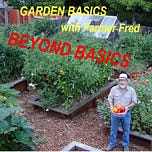




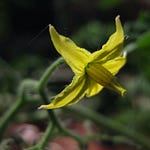
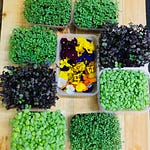


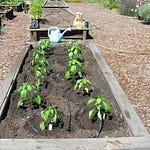
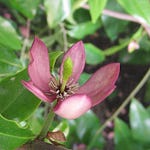
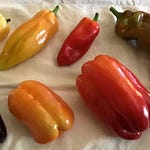
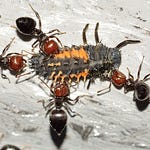
Share this post